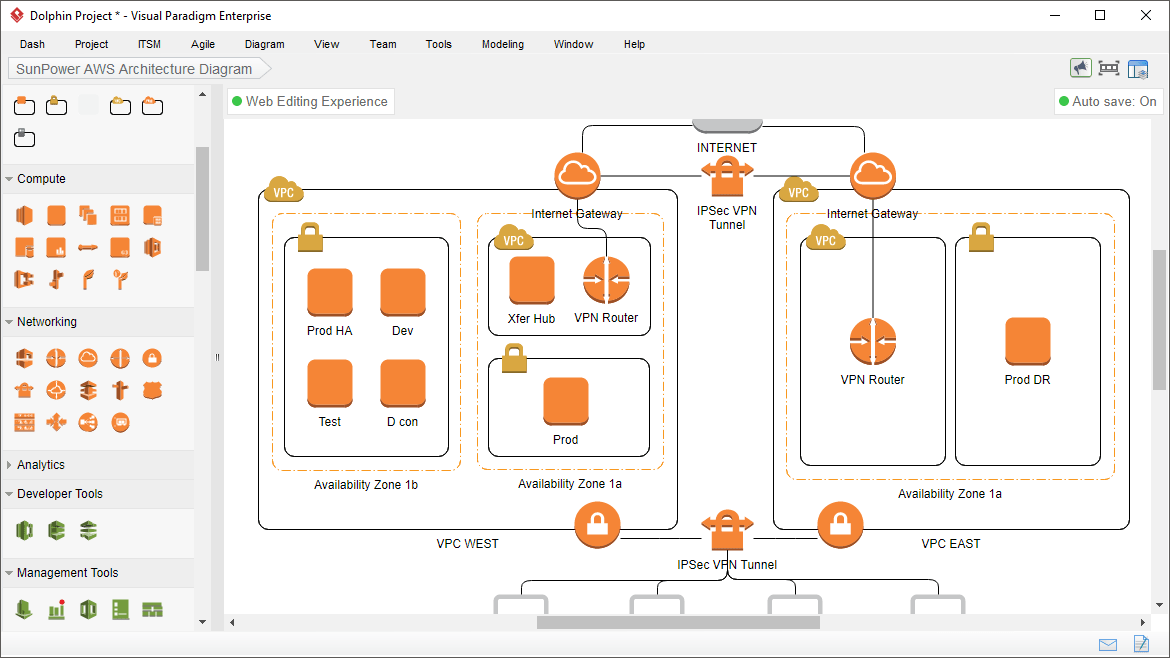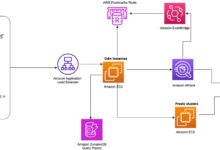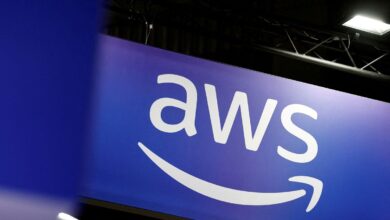AWS 53: The Ultimate Guide to Amazon’s Revolutionary Cloud Service
Welcome to the ultimate deep dive into AWS 53 — a term that’s sparking curiosity across the tech world. Whether you’re a cloud architect, developer, or just tech-curious, this guide will demystify everything about AWS 53 with clarity and precision.
Understanding AWS 53: What Is It Really?

Despite widespread speculation, there is no official AWS service named “AWS 53” in Amazon’s current cloud portfolio as of 2024. However, the term “AWS 53” is often used colloquially or mistakenly in online forums, search queries, and social media discussions. Most likely, it refers to Amazon Route 53, a highly available and scalable Domain Name System (DNS) web service. The number “53” is a direct reference to TCP/UDP port 53, which is the standard port used for DNS traffic across the internet.
The confusion arises because AWS services are typically prefixed with “AWS,” and since Route 53 is one of the most critical networking services offered by Amazon Web Services, users often combine the two into “AWS 53.” This misnomer has gained enough traction to become a popular search term, prompting the need for a comprehensive clarification and educational resource.
Why the Name Route 53?
The name “Route 53” is cleverly derived from port 53, which handles DNS queries using both TCP and UDP protocols. In networking, when your browser requests a website like www.example.com, it sends a DNS query over port 53 to translate the human-readable domain name into an IP address. Amazon chose this name to reflect the service’s core function — routing internet traffic efficiently and reliably.
- Port 53 is the global standard for DNS communication.
- The term “Route” symbolizes directing traffic across the internet.
- Together, Route 53 signifies a service dedicated to routing via DNS on port 53.
Common Misconceptions About AWS 53
Many people believe “AWS 53” is a standalone product or a new generation of AWS infrastructure. Some even speculate it could be related to quantum computing, edge networks, or AI-driven routing systems. However, these are unfounded theories. There is no evidence from AWS documentation, press releases, or official blogs supporting the existence of a service called “AWS 53.”
Instead, all signs point to Route 53 being the intended subject. It’s crucial to clarify this early to prevent misinformation and ensure accurate technical understanding.
“Route 53 is not just a DNS service — it’s a foundational component of modern cloud architecture.” — AWS Official Documentation
AWS 53 vs. Amazon Route 53: Clarifying the Confusion
While “AWS 53” isn’t an official product name, Amazon Route 53 is very real and widely used across enterprises, startups, and government agencies. Let’s break down the differences and connections between the two terms.
Official AWS Naming Convention
Amazon Web Services follows a consistent naming pattern for its products:
- Amazon S3 (Simple Storage Service)
- Amazon EC2 (Elastic Compute Cloud)
- Amazon RDS (Relational Database Service)
- Amazon VPC (Virtual Private Cloud)
- Amazon Route 53
Notice that none of these services are referred to as “AWS [Name]” in official documentation. While colloquially people say “I’m using AWS S3,” Amazon consistently brands the service as “Amazon S3.” Therefore, “AWS 53” is not a valid branding but rather a user-generated shorthand.
Why Does This Confusion Persist?
The persistence of the term “AWS 53” can be attributed to several factors:
- Search Engine Behavior: Users type “AWS 53” into Google, expecting results about Route 53, reinforcing the term in autocomplete and SEO.
- Social Media & Forums: Reddit, Stack Overflow, and LinkedIn discussions often use shorthand like “AWS 53” for brevity.
- Lack of Technical Clarity: Newcomers to cloud computing may not understand DNS mechanics or port numbering, leading to naming confusion.
Despite this, AWS continues to use “Amazon Route 53” in all official communications, APIs, and billing statements.
Core Features of Amazon Route 53 (The Real AWS 53)
Now that we’ve clarified the naming issue, let’s explore the actual capabilities of Amazon Route 53 — the service most likely being referred to when someone says “AWS 53.” It’s far more than just a DNS resolver; it’s a full-featured traffic routing and domain management platform.
DNS Management and Domain Registration
Route 53 allows users to register new domains (e.g., example.com) and manage DNS records for any domain, whether purchased through AWS or imported from another registrar.
- Supports common record types: A, AAAA, CNAME, MX, TXT, NS, SOA, SPF, SRV, and more.
- Automated DNS failover and health checks.
- Integration with AWS Certificate Manager (ACM) for SSL/TLS certificate validation.
For example, you can configure an A record to point your domain to an Elastic IP, an Application Load Balancer, or a CloudFront distribution.
Traffic Flow and Routing Policies
One of Route 53’s most powerful features is its advanced routing policies, which allow fine-grained control over how traffic is distributed.
- Simple Routing: Routes traffic to a single resource.
- Weighted Routing: Distributes traffic across multiple endpoints based on assigned weights (e.g., 70% to US-East, 30% to EU-West).
- Latency-Based Routing: Directs users to the region with the lowest network latency.
- Failover Routing: Automatically switches to a backup site if the primary fails.
- Geolocation Routing: Routes traffic based on the user’s geographic location.
- Multi-Value Answer Routing: Returns multiple healthy endpoints in response to DNS queries.
These policies make Route 53 indispensable for global applications requiring high availability and performance optimization.
Health Checks and Failover Automation
Route 53 can monitor the health of your web servers, load balancers, or any internet-facing endpoint by sending automated requests (HTTP, HTTPS, TCP) at regular intervals.
- If a health check fails, Route 53 stops routing traffic to that endpoint.
- Can trigger failover to a secondary region or backup system.
- Supports IPv4 and IPv6 health checks.
- Customizable thresholds and alarm integration with Amazon CloudWatch.
This proactive monitoring ensures minimal downtime and enhances user experience during outages.
How AWS 53 (Route 53) Integrates with Other AWS Services
Amazon Route 53 is designed to work seamlessly with other AWS services, forming the backbone of cloud networking and application delivery.
Integration with Amazon EC2 and Elastic IPs
When you launch an EC2 instance, you can assign it a public IP. However, public IPs change when the instance is stopped and restarted. To maintain a consistent domain name, you can create an A record in Route 53 pointing to an Elastic IP address, which remains static.
You can also use Route 53 to map a domain name directly to an EC2 instance’s public DNS name using a CNAME record, though this is less common for root domains (apex domains).
Working with Elastic Load Balancing (ELB)
For scalable applications, Route 53 integrates with Application Load Balancers (ALB), Network Load Balancers (NLB), and Classic Load Balancers. You can create alias records in Route 53 that point to your load balancer, enabling seamless traffic distribution across multiple instances.
- Alias records are free and don’t incur additional DNS query charges.
- They support automatic failover if one Availability Zone becomes unavailable.
- Perfect for microservices architectures and auto-scaling environments.
Learn more about ELB integration in the official AWS documentation.
CloudFront and Global Content Delivery
For websites using Amazon CloudFront as a Content Delivery Network (CDN), Route 53 plays a critical role in directing users to the nearest edge location.
- Create a CNAME or alias record pointing to your CloudFront distribution domain (e.g., d1234567890.cloudfront.net).
- Use latency-based routing to optimize delivery speed.
- Enable HTTPS with ACM-managed certificates validated through DNS records in Route 53.
This integration ensures fast, secure, and reliable content delivery worldwide.
Security and Compliance in AWS 53 (Route 53)
Security is paramount when managing DNS, as misconfigurations can lead to outages, phishing attacks, or domain hijacking. Route 53 provides robust security features to protect your digital assets.
DNSSEC Support for Domain Validation
Domain Name System Security Extensions (DNSSEC) add a layer of security by digitally signing DNS records to prevent spoofing and cache poisoning attacks.
- Route 53 supports DNSSEC signing for domains hosted within AWS.
- You can enable DNSSEC via the AWS Management Console or CLI.
- Requires coordination with your domain registrar if they handle DNS.
More details on DNSSEC setup are available in the AWS DNSSEC guide.
Private Hosted Zones for Internal Networking
Route 53 isn’t just for public internet domains. It also supports Private Hosted Zones, which allow you to manage DNS within your Amazon VPCs without exposing records to the public internet.
- Useful for internal service discovery (e.g., database.internal, api.service.local).
- Can be shared across multiple VPCs using AWS Resource Access Manager (RAM).
- Integrates with on-premises networks via AWS Direct Connect or Site-to-Site VPN.
This feature is essential for hybrid cloud architectures and enterprise-grade internal routing.
Access Control with IAM and Resource Policies
Route 53 integrates with AWS Identity and Access Management (IAM) to enforce granular permissions.
- Create IAM policies to restrict who can create, modify, or delete DNS records.
- Apply resource-based policies to control access to hosted zones.
- Enable AWS CloudTrail logging to audit all DNS changes for compliance.
These controls help meet regulatory requirements such as HIPAA, SOC 2, and GDPR.
Performance Optimization Using AWS 53 (Route 53)
One of the key reasons enterprises choose Route 53 is its ability to optimize application performance through intelligent routing and low-latency responses.
Latency-Based Routing in Action
Latency-based routing allows you to run identical applications in multiple AWS regions and route users to the one with the fastest response time.
- Route 53 measures the latency between the user’s location and each endpoint.
- Automatically directs traffic to the lowest-latency region.
- Ideal for global SaaS platforms, gaming servers, and real-time communication apps.
This dynamic routing improves user experience and reduces page load times significantly.
Traffic Flow for Complex Routing Scenarios
For large-scale applications, Route 53 offers Traffic Flow, a visual DNS management tool that lets you design complex routing rules using a drag-and-drop interface.
- Create routing configurations that combine geolocation, latency, failover, and weighted routing.
- Apply rules hierarchically to manage multi-region, multi-service deployments.
- Deploy changes globally in seconds with versioning and rollback capabilities.
Traffic Flow simplifies what would otherwise require dozens of manual record sets and complex scripting.
Query Logging and Monitoring with CloudWatch
To troubleshoot performance issues or analyze traffic patterns, Route 53 supports query logging to Amazon CloudWatch Logs.
- Log every DNS query made to your hosted zones.
- Analyze traffic sources, error rates, and query volume.
- Set up alarms for unusual spikes or failed lookups.
This visibility is crucial for security monitoring and capacity planning.
Pricing and Cost Management for AWS 53 (Route 53)
Understanding the cost structure of Route 53 is essential for budgeting and optimizing cloud spend. Unlike some AWS services, Route 53 pricing is based on several usage-based components.
Hosted Zones and Monthly Fees
Each hosted zone (a container for DNS records of a domain) incurs a monthly fee:
- Public Hosted Zones: $0.50 per month per hosted zone.
- Private Hosted Zones: $0.10 per month per VPC associated with the zone.
If you host multiple subdomains (e.g., api.example.com, blog.example.com), each requires its own hosted zone unless managed under the same parent domain.
DNS Query Costs
Route 53 charges for the number of DNS queries your domains receive:
- First 1 billion queries/month: $0.40 per million queries (public), $0.30 per million (private).
- Volume discounts apply beyond 1 billion.
For most small to medium businesses, DNS query costs are minimal. High-traffic websites (e.g., Netflix-scale) may incur higher fees, but caching reduces the load.
Health Check and Traffic Flow Pricing
Additional features come with separate pricing:
- Health Checks: $0.50 per health check per month + $0.75 per million status checks.
- Traffic Flow: $0.50 per traffic policy per month + $0.25 per million queries.
It’s important to clean up unused health checks and policies to avoid unnecessary charges.
Common Use Cases for AWS 53 (Route 53)
Amazon Route 53 is used in a wide variety of real-world scenarios, from simple websites to complex multi-cloud architectures.
Website Hosting with S3 and CloudFront
You can host a static website on Amazon S3 and use Route 53 to route traffic from your custom domain (e.g., www.mybusiness.com) to the S3 bucket or CloudFront distribution.
- Create an S3 bucket with website hosting enabled.
- Set up a CloudFront distribution for HTTPS and caching.
- Use Route 53 to create an alias record pointing to CloudFront.
This setup is cost-effective, scalable, and secure.
Disaster Recovery and Multi-Region Failover
Enterprises use Route 53’s failover routing to implement disaster recovery strategies.
- Primary site in us-east-1 with health checks.
- Secondary site in eu-west-1 configured as a backup.
- If health checks fail in the primary region, traffic automatically shifts to the secondary.
This ensures business continuity during regional outages.
Microservices and Internal Service Discovery
In containerized environments (e.g., ECS, EKS), Route 53 Private Hosted Zones enable service discovery.
- Each microservice can have a DNS name like payment.service.internal.
- Applications resolve these names dynamically without hardcoding IPs.
- Health checks ensure only healthy instances receive traffic.
This approach enhances agility and resilience in modern cloud-native applications.
Troubleshooting and Best Practices for AWS 53
Even with its reliability, misconfigurations can occur. Here are common issues and best practices for managing Route 53 effectively.
Common DNS Configuration Mistakes
Some frequent errors include:
- Using CNAME records at the apex (e.g., example.com) — this violates DNS standards. Use alias records instead.
- Forgetting to update name servers at the registrar after creating a hosted zone.
- Overlapping hosted zones causing routing conflicts.
- Not enabling health checks for critical endpoints.
Always validate your DNS settings using tools like dig, nslookup, or online DNS checkers.
Best Practices for Secure and Reliable DNS
To maximize uptime and security:
- Enable DNSSEC for public domains.
- Use multi-factor authentication (MFA) for AWS account access.
- Regularly audit IAM policies and DNS changes via CloudTrail.
- Implement automated backups of hosted zone configurations.
- Use Route 53 Resolver for hybrid DNS in multi-account environments.
Monitoring and Alerting Setup
Proactive monitoring prevents outages:
- Create CloudWatch alarms for failed health checks.
- Enable query logging for anomaly detection.
- Use AWS Config to track compliance with DNS policies.
- Integrate with third-party observability tools like Datadog or New Relic.
“A well-configured DNS is invisible — until it breaks. Then it’s everything.” — Cloud Operations Engineer
Future of AWS 53: What’s Next for Route 53?
As cloud computing evolves, so does Route 53. AWS continues to enhance its capabilities to meet the demands of AI-driven applications, edge computing, and zero-trust architectures.
Integration with AWS Global Accelerator
Global Accelerator improves application availability and performance by routing traffic through AWS’s global network. Route 53 can now route traffic directly to Global Accelerator endpoints, combining DNS intelligence with network optimization.
- Reduces latency by up to 60% for cross-region traffic.
- Provides static anycast IP addresses for consistent routing.
- Automatically reroutes traffic during regional disruptions.
AI-Powered Traffic Management (Speculative)
While not yet announced, future versions of Route 53 could leverage machine learning to predict traffic patterns, detect anomalies, and auto-optimize routing policies based on real-time data.
- Predictive failover before outages occur.
- Dynamic weight adjustment in weighted routing based on load.
- Automated DDoS mitigation through intelligent query filtering.
Such advancements would solidify Route 53’s position as the smartest DNS platform in the cloud.
Expansion into IoT and Edge DNS
With the growth of IoT and AWS Wavelength, there’s potential for Route 53 to support ultra-low-latency DNS resolution at the network edge.
- Local DNS caching in 5G edge locations.
- Device-level service discovery in smart cities and industrial IoT.
- Integration with AWS IoT Core for secure device identity resolution.
The future of “AWS 53” is not just about resolving names — it’s about enabling intelligent, adaptive, and secure connectivity across the digital world.
What is AWS 53?
“AWS 53” is not an official AWS service. It’s a common misnomer for Amazon Route 53, a scalable DNS web service that routes internet traffic using port 53, the standard for DNS.
Is Amazon Route 53 free to use?
No, Route 53 is not free, but it has a free tier. You pay for hosted zones, DNS queries, health checks, and traffic flow policies. Small projects may fall within free usage limits.
How do I set up Route 53 for my domain?
Register or transfer your domain to Route 53, create a hosted zone, add DNS records (A, CNAME, MX, etc.), and update your registrar’s name servers to AWS’s name servers.
Can Route 53 improve website performance?
Yes. Using latency-based routing, health checks, and integration with CloudFront, Route 53 can direct users to the fastest and most reliable endpoint, improving load times and availability.
Does Route 53 support private DNS for VPCs?
Yes. Route 53 supports Private Hosted Zones, allowing you to manage internal DNS within Amazon VPCs for secure service discovery without exposing records to the public internet.
In conclusion, while “AWS 53” may not be an official product, the service it refers to — Amazon Route 53 — is a cornerstone of modern cloud infrastructure. From domain registration to intelligent traffic routing, DNS security, and hybrid networking, Route 53 empowers organizations to build resilient, high-performance applications. By understanding its features, pricing, and best practices, you can leverage this powerful tool to its fullest potential. Whether you’re a beginner or a seasoned architect, mastering Route 53 is essential for success in the AWS ecosystem.
Further Reading:









